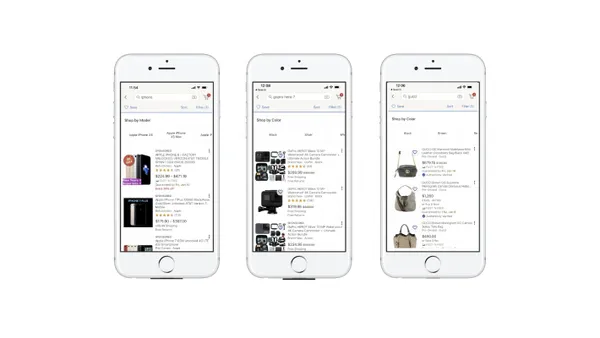Social commerce is where social media and e-commerce intertwine. Consumers scroll social media platforms like TikTok and Instagram for entertainment and information. More recently, consumers are using social media to browse and shop online. If brands want to reach a new pool of consumers, they must meet shoppers where they are.
Consumers want convenience and variety when shopping online – and they are willing to invest time and effort to comparison shop. An overwhelming 82% of global consumers will visit two or more websites before buying, according to the 2023 Online Consumer Behavior Global Report by Rithum and research firm Dynata. This report was based on a survey of over 6,000 online shoppers across the U.S., U.K., Australia, France, Germany, Sweden and Denmark in August 2023.
That's the same percentage of consumers who found items through Amazon recommended products and Google search ads. 72% of consumers said they would go further, visiting two to four websites before buying, according to the report.
Social commerce is popular among younger consumers
Adding social media platforms as a selling channel gives direct-to-consumer (DTC) brands the opportunity to connect with audiences they might not otherwise reach. This includes reaching younger consumers who are comfortable scrolling and trying new products they find through social media. According to the report, 63% of consumers between the ages 18-25 said they had been influenced to make a purchase after seeing a product promoted by a brand on social media in the past 12 months.
Consumers comfortable purchasing through social media are expected to buy more through 2027. According to market research company eMarketer, U.S. social commerce sales per buyer is expected to nearly double from $627.8 billion in 2023 to $1,223.7 billion in 2027.
That influence isn't limited to Gen Z'ers. More than half of consumers (53%) ages 26-35, and 40% of consumers ages 36-45 also said they were influenced to buy products they saw through social media ads, according to the Rithum and Dynata report.
Social media goes beyond brand awareness
Social commerce is evolving. The rate at which it has grown has exploded over the last year. It is expected to reach $1.698 trillion in sales by the end of 2024, according to data gathering platform Statista. That momentum shows no signs of slowing.
Consumer behavior indicates that social commerce is a retail opportunity for the long-term. 23% of global consumers indicated that they already use their social media feed to find products to buy online, according to the Rithum and Dynata report.
According to research and consulting firm Forrester’s August 2023 Consumer Pulse Survey, 46% of consumers who participated in back-to-school shopping bought directly from an ad they saw on social media. But brands are learning they can leverage social media beyond sponsored ads. It is its own selling channel.
ByteDance's TikTok launched TikTok Shop in September 2023 in the United States. TikTok Shop is also live in the United Kingdom. Instead of relying solely on ads, influencer’s user-generated content (UGC) creates an authentic shopping experience. Consumers can now buy products promoted by their favorite content creators. TikTok’s community spans more than 1 billion monthly active users.
Social commerce as an authentic shopping experience
Brands can look to content creators, or influencers, to reach new consumers. Here, it's the quality, rather than quantity, of followers that matter. Non-celebrity micro-influencers with a few thousand loyal followers capture attention and can contribute toward a higher conversion rate for a product.
Authenticity is increasingly important. Micro-influencers have gained followers by sharing their lives or advice on social media. UGC is not produced or polished by brands. Here, the content creator shares a product they like with their followers. As a result, consumers tend to trust their recommendations.
Brands can partner with influencers, where the influencer promotes the brand’s products or services through social media platforms such as TikTok, Facebook, Instagram, YouTube and others. These relationships can be established directly between the influencer and brand or be connected through agencies that help usher these relationships to find the right fit.
Apparel and beauty categories are popular among consumers shopping through social media. These tend to be lower-priced purchases, so the risk and reward is less prohibitive. It's also easy with less friction to pay at checkout. Consumers can increasingly pay through various social media apps using trusted methods such as PayPal, Apple Pay, Google Pay and Venmo.
The evolution of social commerce isn’t a passing trend. Consumers want an honest review – and they feel they can trust the content creators they follow on social media. Social media opens a gateway for brands to create an authentic connection with consumers. Learn more about selling on TikTok Shop, and Shops on Facebook and Instagram.










